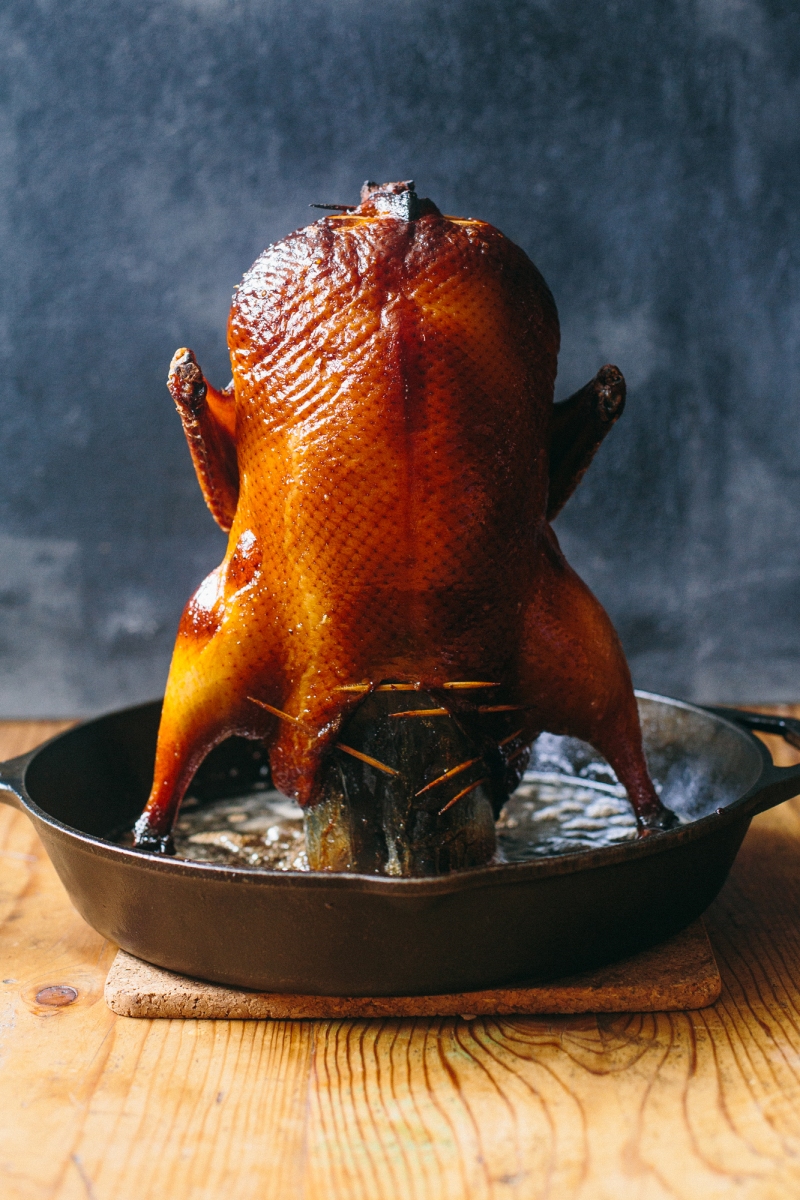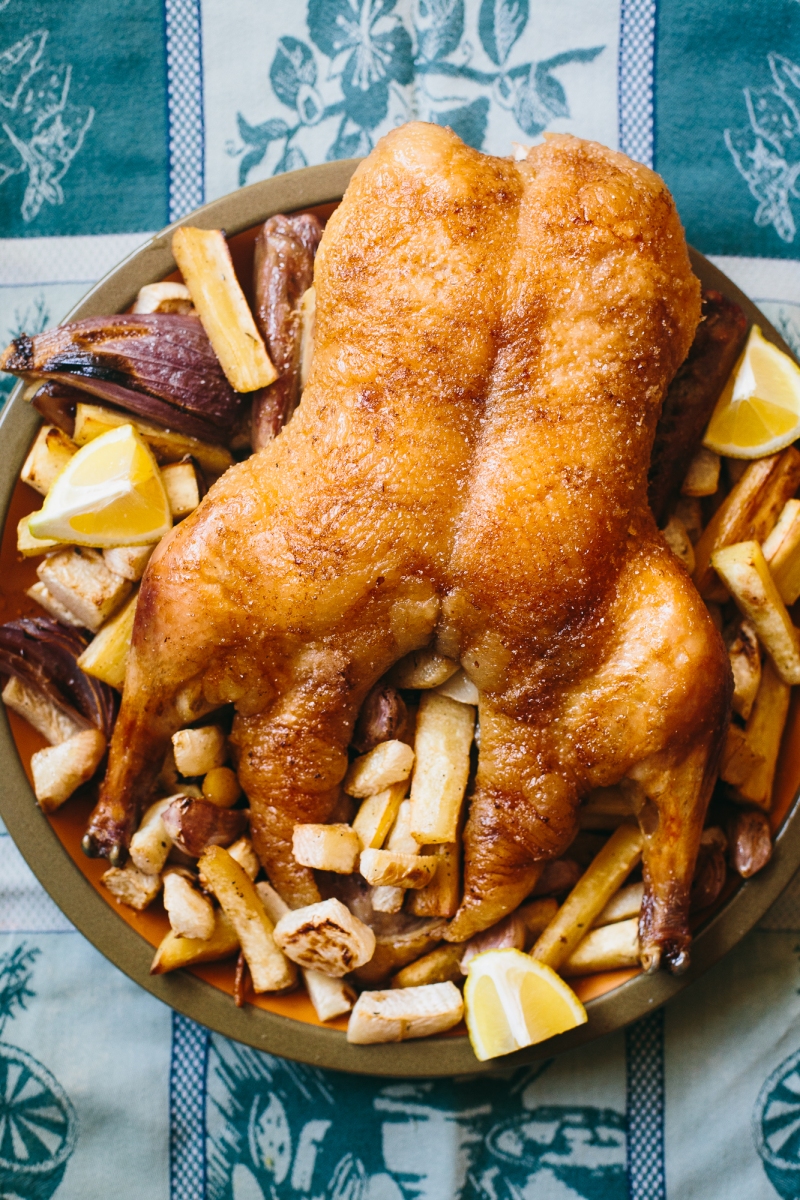
This is it: my last post before the limited edition hardcover version of The Heritage Cookbook is no longer available for purchase. This special edition shop will only be open until midnight Sunday, June 30th, because after that I must submit my order to the printer in time for an October delivery. We’ve sold a little over 500 copies at this point, which means I’ve reached my target goal and won’t be losing money off this endeavor. It’s a huge weight off my shoulders! Thank you to everyone who has purchased a copy for yourself or a loved one — your support means a lot to me, and I think you’re going to love the finished product.
So to celebrate this milestone, I’m sharing one of my crowning achievements from this book’s recipe development: a recipe for Cantonese roast duck that rivals the versions you’ll find in restaurants. I found that the trick to getting that crispy-all-over texture comes from lots of exposure to air: air out the duck in the fridge, then brush on the glaze while airing it out with a fan, and propping the duck upright using a bottle so that the air hits every part of it.
Be warned that there are a few unconventional ingredients in this dish, but a) most Chinese markets will carry them at a fair price, b) you can find on them online for a little bit more (links below), and c) because they are all shelf stable, you won’t need to reinvest in these ingredients for some time. While you’re there at the market, pick up an extra Chinese rice wine bottle, the ones with a squared base — they’re the best bottles for keeping the duck solidly upright (see the picture above).





